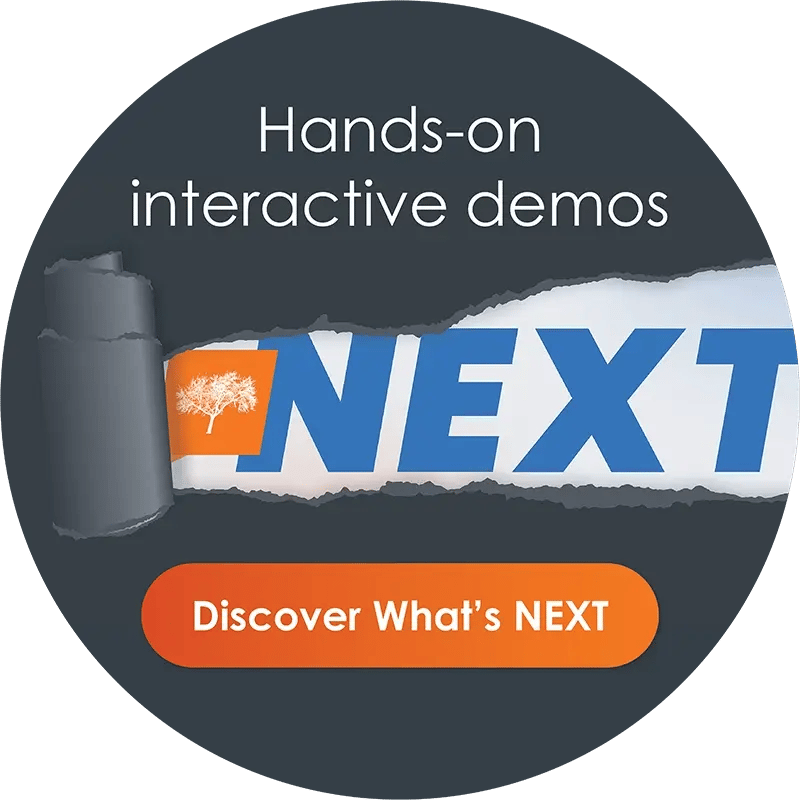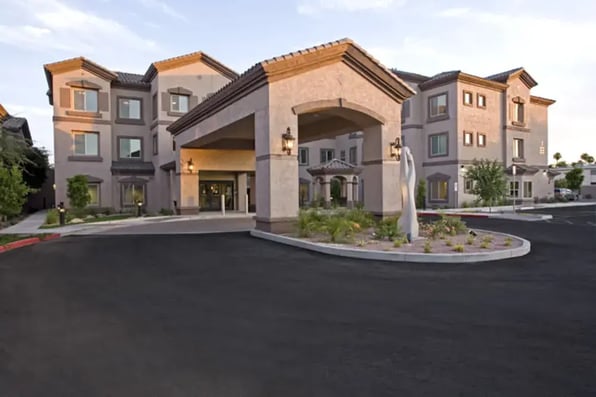A Guide to Use of Analytics in the Assisted and Senior Living Industries

Big data has come a long way over the last few decades, with technological advances improving access to vast amounts of information, and businesses across all industries striving to become data driven, transforming their outcomes with actionable insights. Senior living and assisted living communities are no different. In fact, they are using data to make informed decisions that lead to increased resident satisfaction and well-being.
Leveraging data analytics in your senior care community is doable, but you need a good understanding of the what, why, and how. We’re here to give it to you. Follow along with our complete guide to learn why data matters in the senior living and assisted living sectors, how to choose an analytics software that fits your needs, and how to implement it to maximize benefits to your community, staff, and residents.
Understanding Senior & Assisted Living Analytics
The first step in putting big data to work for your senior housing community is knowing how the process works. Consider this your crash course in data analytics for senior living.
The Basics of Data Analytics
Data analytics can sound overwhelming if you’re just getting started, but the process is overall relatively simple. Remember that the goal is to make decisions based on hard evidence rather than lucky (or unlucky) guesses, and the data you have access to is what makes that possible. Here are the three main steps within data analytics:

Let’s take a deeper dive into each step.
Data Collection
Data collection is the first step of the process, and it determines how you’re going to gather all the data you need to make more informed decisions. You may not think you have a ton of data worth collecting, but you do. All the information that flows through your senior living or assisted living community is valuable when it’s put to good use. But it helps to have the right technology in place before you begin. Check the tools you’ve already got in place to see what analytics they provide. Your EHR or EMAR may offer some built-in reporting, along with other software platforms you use. Remember that these programs may not always be integrated, and they may not be as robust as an end-to-end software solution.
In this stage, you will also determine what you’re analyzing. Do you want to focus on staff retention or skilled nursing? You might want to track employee turnover, attendance, engagement, or other data points. This is where you set the metrics and key performance indicators (KPIs) that matter. Doing so, in turn, helps you determine the best path to gaining valuable insights.
Data Processing
In the data processing stage, you create a method for filtering, sorting, and viewing the data. This may be a built-in feature through your software platform, but if not, you’ll need to find a way to extract and sort the data to get the most out of it. A third-party analytics software is a good option, but you’ll want to look for one that offers:
- Customized dashboards for a high-level, real-time view of the relevant data
- Data visualization for key data points at-a-glance
Data Interpretation
Finally, you will enter the data interpretation stage, which is exactly what it sounds like. Now that you’ve gone through the what and the how, it’s time to figure out the why. And the reason why you’ve collected and processed all this information is to compile actionable insights and make data-driven decisions. Now is the time for you to set goals based on the data and put a plan in place to implement changes. Be sure that your plan includes measuring your progress, so you can clearly track the outcomes derived from the data.
Types of Data Analytics for Senior Care
Not all data is created equal. And the type of data that is most valuable will vary based on the needs of your community and the goals you’ve set for your staff or residents. Those needs will be different depending on whether you lean more toward the independent living or nursing home end of the senior care spectrum. For instance, you might find that demographics are important to track for certain metrics, while other data, like psychographics, behavioral, or attitudinal factors, matter more for others. Let’s get a brief overview of the different types of analytics:

What do these different types of data analytics actually mean to your assisted living, independent living, senior care community, or nursing home? We’re glad you asked! Let’s break each type down into a question and an answer:
Q: What happened before?
What occurred at a specific event or during a time period in the past?
A: Descriptive analytics can tell you.
Descriptive analytics tell you the what from a previous event or time period. It’s the easiest data to track and analyze, but it also gives the least value. While you cannot change what has already happened, you can use this data to make better decisions and set more appropriate goals going forward.
Q: Why did it happen?
What actions or decisions led up to an event or trend found in your data?
A: Diagnostic analytics can help.
Perhaps you want to know why occupancy decreased in the fourth quarter of the previous year. You can use diagnostic analytics to discover why something happened.
Q: What could happen in the future?
What events can you anticipate and prepare for down the road?
A: Predictive analytics will tell you.
Predictive analytics are more complex, but they are also more valuable in that they can show what may occur at a future time, equipping you with the knowledge and time to prepare for it.
Q: What do we do now?
What actions should we take based on the data we have?
A: Prescriptive analytics can show you the path.
Prescriptive analytics are by far the most complicated analytics to run, but they are also the most valuable. Prescriptive analytics help you take insights and turn them into actions. This happens when you use the data you’ve collected, processed, and interpreted to determine the best course of action.
Data Sources in Assisted Living communities and Senior Housing
You already have this powerful data available to you in your senior care community, just ready and waiting to be harnessed and analyzed. But how do you actually get it? While it varies from community to community, there are many common sources from which senior living operators can source data.

With all of these data sources — and possibly even more — it may be wise to consider vendor consolidation, so you can start using a fully integrated, comprehensive software platform to gather, manage, and interpret your data all in one spot. More on that in just a bit.
Applying Analytics to Your Senior or Assisted Living Facility
The next steps of your journey to creating a culture of analytics are choosing the best analytics platform, implementing the new solution into your operations, and understanding the benefits of doing so.
A Basic Implementation Roadmap for Data Analytics in Senior Living Communities
The stage of actually implementing an analytics tool involves a series of strategic steps. Below is a quick roadmap to guide you through the process, along with common pitfalls to watch out for at each step.
- Define Objectives and Goals: Identify what you aim to achieve with data analytics. Are you focusing on resident care, staff retention, operations efficiency, or another issue? Not having a clear objective can lead to scattered efforts and misguided data.
- Assess Current Capabilities: Do you have any data collection or analysis capabilities within your current staff or technology lineup? Overlooking this step can hinder the later implementation steps.
- Develop a Data Management Plan: Create an internal plan for securely collecting, storing, and managing your data. This should be clearly documented because poor data management policies can lead to breaches or non-compliance with certain regulations.
- Train Staff and Foster a Data-Driven Culture: Provide training for your staff to ensure they’re comfortable using the new tools. Resistance to change is common, so find a provider that offers an easy onboarding and training process.
- Implement the Analytics Platform: Rushing the implementation can sometimes lead to errors, so it may be best to roll out the new platform in phases, starting with pilot programs to test and refine processes before full implementation.
- Monitor and Adjust: Software solutions are rarely perfect from day one. Monitor the performance of your new platform and make data-driven adjustments as needed to get the results you need. Skipping this step can result in missed opportunities for improvement.
By following these six basic steps, you can smoothly integrate data analytics into your senior living community. If done right, it will lead to a wide range of benefits for your organization.
The Benefits of Implementing Data & Analytics into Your Senior Care Operations
On the surface, it may seem like the advantages of data are enjoyed only by the staff of the organization. However, that’s not the case. In reality, those advantages extend well beyond the staff, benefitting the residents and their families as well.
Here are some of the key benefits your senior or assisted living community could enjoy:
Enhanced Resident Care
Your primary goal is to offer excellent care to your assisted living residents, in order to ensure their health, safety, and well-being. Analytics can certainly help you do that. Through data analytics, you can better manage medications, provide effective healthcare, maintain or boost occupancy, and improve overall quality of care and resident satisfaction.
Improved Operational Efficiency
Keeping your overhead low and your output high is key to any business, but both assisted living and senior living communities can benefit greatly from ramping up their efficiency. Leveraging your operational data can help you do that in several ways, including:
- Facility Management: Ensuring long-term care spaces are safe, maintained, and accessible for all residents to continue the activities of daily living.
- Staffing Optimization: Ensuring resource management is a seamless process and that you have processes and policies in place that use analytics to increase staff productivity.
- Cost Reduction: Ensuring you aren’t overspending on operations or maxing out your monthly costs, and that you’re putting your budget where it has the greatest impact.
Better Managed Regulatory Compliance and Reporting
Compliance is critical, and it’s important that it stays at the top of your priority list, especially when you’re dealing with Medicaid, Medicare, and other providers. Analytics can help you stay compliant by making it easier to create reports and compile evidence that you’re meeting all regulations. When you track key data on an ongoing basis, reporting becomes an easier process that also reduces the burden on staff and lets them focus on other tasks.
Increased Family and Resident Engagement
Everyone is looking for personalization these days, and with many living options available to older adults, the customized details can really set you apart. Using data will help you tailor care plans and engagement/activity plans for residents. It can even help you implement a family portal to keep loved ones in the loop. You can collect engagement data from your activity software, track attendance, and ask for surveys and feedback. Be sure to include family members when gathering data, as their opinions are equally valuable.
Choosing the Right Analytics Platform for Your Community
A senior living analytics tool should be comprehensive, easy to learn and use, and should integrate seamlessly with your other software platforms. For instance, our ElderSmarts analytics program is part of our Eldermark NEXT platform, an end-to-end software solution that manages everything from CRM to EHR, staffing acuity, marketing, and much more.
Curious to see how Eldermark NEXT stacks up?

As you can see, you won’t get a comprehensive suite of services on any other platform. While others do offer some reporting and analytics, those reports only pull data from the services listed. With Eldermark NEXT, you’ll get an end-to-end solution (designed specifically for the senior living industry) that leverages powerful data analytics to help you make the right decisions for your community, your staff, and your residents.
The Future of Analytics in Senior Housing and Assisted Living
There’s a bit of a fallacy in the senior living industry that technology and anything related to older adults just don’t mix, but it couldn’t be further from the truth. More seniors than ever are using technology to maintain contact with loved ones, to manage their activities and schedules, and to maintain their independence. They want a residential care community or assisted living community that understands this, and they’re looking for senior living operators that stay on top of the latest technological advances. But the future is already upon us, so you’ll need to be ready to learn and adapt if you want to keep up with tomorrow’s trends.
Emerging Trends and Technologies in Data Analytics for Long-Term Care
What’s on the horizon for senior living analytics and assisted living data? Here is a quick look at some of the big advances happening now:
- Artificial Intelligence: AI is changing the senior living landscape, and the change is coming faster than you might think. Already, AI chatbots and digital assistants are being used to monitor and improve mental wellness, along with tackling issues of isolation and loneliness for those in memory care and/or dealing with Alzheimer’s disease.
- Machine Learning: Machine learning is a form of AI in which computer programs use algorithms and data to become “smarter” over time. Machine learning could be used to implement facial recognition to improve security in an assisted living community, or it could be leveraged for predictive analytics to ramp up care services.
- Internet of Things: IoT integration with wearable devices is powering a new, real-time trend in senior wellness. Wearables are becoming increasingly popular, and they can monitor and report on everything from vital signs to physical activity to health emergencies, meeting multiple care needs. They also make independent living possible for longer for older adults.
How Eldermark NEXT ElderSmarts Analytics Can Help Your Senior Care Community
You’ve probably heard the phrase “work smarter, not harder.” Well, ElderSmarts Analytics does both. Our tool allows your team to maximize the impact of your data and make the right decisions for your senior living community while providing the best care. When you consolidate multiple vendors and opt for Eldermark NEXT, you get all the services and use cases you need in one convenient, easy-to-use platform.
With Eldermark NEXT, you can take advantage of numerous benefits, like:
- Single platform onboarding and training
- Seamless integration between functions
- Reduced errors and improved accuracy
- Real-time dashboards for at-a-glance data
- Custom reporting
- Staff management
- Streamlined single-platform pricing
- Digital record-keeping for medical, CRM, nutrition, engagement, and more
Senior and assisted living communities like yours will face obstacles, but you can use your own data to overcome those obstacles. Want to learn more? Check out our free webinar on leveraging the power of analytics to manage senior living challenges.
Getting Started With Eldermark NEXT
Adopting an entirely new platform that replaces multiple existing softwares can be daunting, but with Eldermark NEXT, it doesn’t have to be. Our smooth and seamless onboarding makes adoption and training easy for your staff, which means you can immediately begin leveraging your data. What you’ll discover is that Eldermark NEXT is an all-in-one solution that improves your efficiency, optimizes your staffing, and delivers positive outcomes for residents.
We’re ready to show you how you can get started with Eldermark NEXT and ElderSmarts Analytics to be data-driven and care-driven at the same time. Schedule your demo today!




